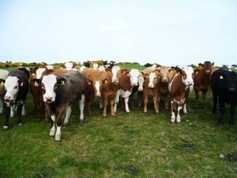Early estimates by the authorities of the German region of Bavaria alone indicate that 30,000 hectares of arable land are under water — nearly the size of Lough Neagh.
The situation is replicated in the neighbouring regions of Thuringia and Saxony, as well as in Austria and in the Czech Republic. Midweek, floodwaters were moving north inside Germany and east towards Hungary.
“With the flood and heavy rain, many fields are under water. Houses are flooded, outbuildings and crops are destroyed,” German agriculture minister Ilse Aigner said in a statement on Wednesday.
She added: “Although the exact extent of the damage is not accurately estimated at this time, we must act as soon as possible. It is important that immediate aid is secured for distressed farmers and their families and to support reconstruction.”
The German government has announced €100m in emergency aid including cash facilities for affected farmers, who will also see some tax payments deferred.
The Central European region worst hit by floodwaters is an intensive tillage and mixed farming area, where swollen rivers expanded into the wheat, barley, potato and beet fields and pastures along their banks.
However, it is too early yet to measure how much of an impact the disaster will have on those countries’ production and, if any, on international markets.
Although Bavaria was one of the earliest regions hit by the disaster and water levels are now going down there, regional agriculture minister Helmut Brunner said it was too early to assess the damage.
“How quickly the water withdraws from agricultural land in the next few days will be decisive,” he told a cabinet meeting on Wednesday.
risk
He added that the crops most at risk were potatoes and turnips, which fail after just a few days under water, but corn, pastures and specialty products such as fruit and vegetables were also under threat.
The Czech authorities, too, were surveying the extent of the damage but have not yet been able to quantify it as water levels there peaked on Tuesday.
The evacuation of the agriculture ministry itself made the response even more difficult. “The effect on agriculture will be direct and indirect,” said ministry spokesman Jan Zacek.
Apart from crop failure and damage to buildings and equipment, ancillary infrastructure will also need extensive works. The Bavarian authorities estimate repairing agricultural roadways in their region alone will cost more than €10m.
The bad weather has hit Central Europe at the same time as unseasonal rain in the US, where soybean markets have shown signs of tension as a result of delayed sowing.
However, this week’s US Department of Agriculture figures show that 91% of maize and 80% of spring wheat and barley is now in the ground and weather news has not affected the price of grain futures.






 This is a subscriber-only article
This is a subscriber-only article










SHARING OPTIONS: